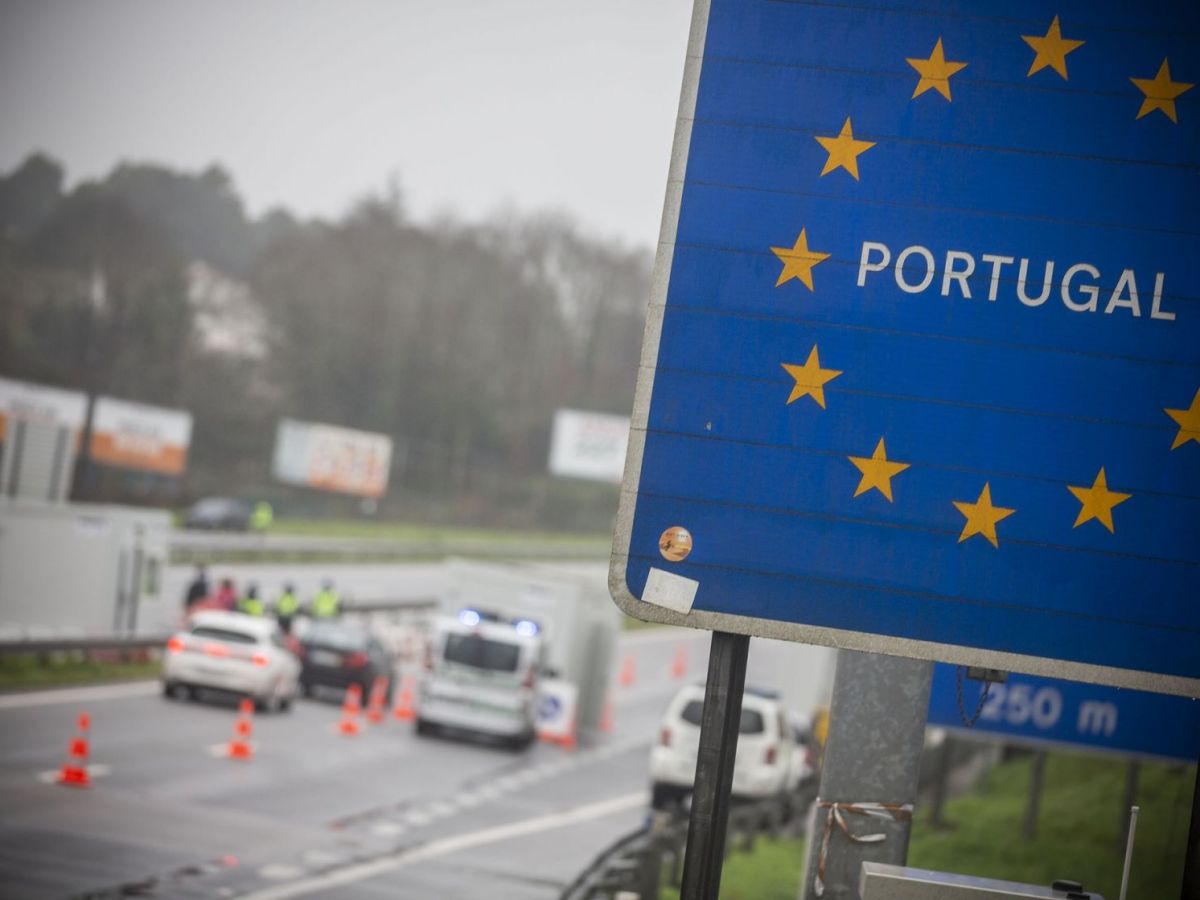Sometimes when you cross the borders between Portugal and Spain, it isn’t obvious - maybe the tarmac will be different in colour (or quality), or the building styles will change slightly the further you progress either way, and there may be a sign saying you have entered Spain or vice versa. You can even walk across, perhaps giving you a Kodak moment of having one foot in each country, specifically on the Ponte Internacional (International Bridge) that connects Tui, Spain and Valença, Portugal. The border between the two countries runs along the middle of this bridge over the Minho River.
The languages are obviously different, and there are some specific border regions where unique, mixed languages or dialects have emerged due to the close proximity and historical interactions between the two cultures. There are no military style huts with armed guards or rolls of razor wire these days, or stamping of passports, as both Portugal and Spain joined the EU at the same time on January 1, 1986, and then signed the Treaty of Accession to the European Economic Community (which in due course became the EU) on June 12, 1985. However, you will receive a stamp in your passport upon entering the Schengen Area, typically at your first point of entry.
What exactly does the Schengen thing mean?
The Schengen Area is currently a group of 29 European countries - 25 EU Member States and 4 non-EU countries (Iceland, Norway, Switzerland and Liechtenstein) - that have largely eliminated border controls between their common borders. This means that people can travel freely between these countries without needing to show their passports or go through other border checks. It's essentially a border-free zone within Europe, allowing for easier travel and movement for both citizens and non-citizens.
The Schengen Agreement, which established the rules for free movement within the Schengen Area, was initially created by five European countries: Belgium, France, Germany (then West Germany), Luxembourg, and the Netherlands. These countries signed the agreement on June 14, 1985, in the town of Schengen, Luxembourg, hence the name. Portugal officially signed the Schengen Agreement on June 25, 1991, and subsequently began the abolition of internal border controls on March 26, 1995.
UK Citizens
Since ‘Brexit’, when the UK left the EU, the Schengen rules are now different for citizens of the UK. You don’t need a visa for short trips to the EU or countries in the Schengen area if you’re staying for 90 days or less in a 180-day period and you’re visiting as a tourist or for certain other reasons, such as studying a short course, getting medical treatment or travelling for business for your UK employer (for example to attend a business meeting or conference), or journalism or other media activities, according to GOV.UK.
But the rules are complicated now. Calculating the 90 days is fairly straightforward, but where the most confusion arises is the rolling 180-day period. It’s often easiest to think of this 180-days as a moving block of time that is counted backwards from each day of staying in the Schengen Area.

Still confused? There are websites and apps on the internet specifically designed to help calculate time for the Schengen 90/180-day rule, so just check online – these will help you track travel days to ensure compliance with the rules.
Can you drive across the border into Spain in a rented car?
Yes, generally you can drive a rental car from Portugal to Spain, but it's essential to inform the rental company beforehand and possibly pay an extra fee for insurance or cross-border travel. Many rental companies allow it, but it's not automatic, and policies vary. It is crucial to check with your rental company if you are intending to drive into Spain, as some companies might charge extra for insurance coverage, and different companies have different rules regarding cross-border travel. And the subject of Tolls inevitably rears its head - if your rental car has a toll transponder for Portugal, it likely won't work in Spain, so you should be prepared to pay tolls by cash or credit card.
Back to the Border
Portugal’s border with Spain is said to be the longest uninterrupted border in Europe, at around 1,214 kilometres, and according to Wikipedia, it is sometimes referred to as ‘The Stripe’ (not to be confused with ‘The Strip’ in Albufeira!), and has remained largely unchanged since the Treaty of Alcañices in 1297. While there's no visible, physical barrier like a wall or fence, the border between Portugal and Spain is largely defined by natural features like rivers and mountains. The Guadiana River forms a significant part of the border, flowing south through both countries before emptying into the Gulf of Cádiz, and various mountain ranges also contribute to the separation. The Pyrenees have long been a formidable land barrier between Spain and Portugal on the Iberian Peninsula and the rest of Europe.

















I think you need to look at a map or get a better editor.
The Pyrenees separates Spain and France, not Portugal and Spain.
By John from Alentejo on 31 Aug 2025, 18:29
Um, the Pyrenees separate Spain and France.
By Rhoni from Lisbon on 01 Sep 2025, 08:26
No mention of the Tagus, Douro, or Minho rivers significance.
By Bert from Beiras on 01 Sep 2025, 09:26
Duhhh!!!!
By Paul DeCourcy from Lisbon on 01 Sep 2025, 11:21
"The rugged terrain along the western frontier of the Iberian Peninsula has long shaped the boundary between Spain and Portugal."
By Vladimir Solano from Algarve on 01 Sep 2025, 13:09
The Pyrenees have long been a formidable land barrier between Spain and Portugal on the Iberian Peninsula AND the rest of Europe.
By Geoff from Algarve on 02 Sep 2025, 09:59
Portugal should build a big, beautiful wall to keep out the Spanish.
By Mark Barber from UK on 03 Sep 2025, 11:16
You forgot to mention that those with residency in Portugal with non WU passports are subject to the Schengen area rules, ie you a nt not remain in Spain for more than 90 days or any other Schengen country for that matter, having residential status in Portugal does not give you freedom of movement. I
By Hector Casa from Algarve on 04 Sep 2025, 17:38
Please read carefully what's written before you criticise...quote 'the Pyrenees have long been a formidable barrier between Spain and Portugal.....on the Iberian peninsula and the rest of Europe
Waitfor it, pay attention at the back, ...on the Iberian peninsula and the rest of Europe...'
By John Inglebrrry from Lisbon on 05 Sep 2025, 12:19